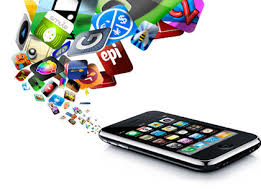How To Deliver Exceptional Customer Service

The most important thing to your business is the customer. And while the old saying ‘the customer is always right’ might not always be spot-on, everything your customer service offers should be impeccable.
Customer services aren’t just for customers who might be disgruntled with their purchase; it is for the smallest pre-purchase questions about how to use the service or item and more. In fact, your sales really start and end with customer service.
Why Does Customer Service Matter?
Depending on your business, you might offer something that is either subscription-based, that can be purchased repeatedly or one-off. With some business models, having loyal and happy customers will mean your retention rate could be higher than it might otherwise be. Customer services can be found across multiple touchpoints in the user journey, too. You might find questions on Instagram, emails, WhatsApp groups are becoming more common, and messages and a chatbot for website users.
Customer service matters because:
- It is a selling point that is often mentioned in reviews.
- Employees will have happier customers, which means they have a more enjoyable role.
- Upselling is a valuable tool and goes hand in hand with customer service.
- Sales can be increased with a customer service team that can offer discounts, samples and more.
- People talk about the great service they had, and even if they aren’t leaving reviews online – they’ll be telling others, and that can mean referrals.
- Reputation is essential, and once it is tarnished, it is hard to get back in the age of the internet.
- Retention – give great customer service, reap the rewards with loyalty
But what can you do as a business to give the best experience in your customer service? And what could set you apart from other companies that offer the same services and products?
Deep Dive
How well do you know your customers? Would you know how to interact with them if you met them face to face? With so many businesses online, this might never happen. You need to have a highly detailed audience profile to give great customer service.
You can quickly build a more personal rapport when you understand how to speak to who you’re speaking to. Arm your customer service team (or yourself) with the right knowledge, and it will instantly upgrade your customer service interactions.

No Miscommunications
One of the biggest issues is a miscommunication between what the customer is asking for and what the customer service delivers. It is becoming more common for customer service agents to repeat back the issue and ask if they have it right. Then, the customer can confirm or clarify. While this can be irritating to some customers, it limits the amount of scope for miscommunication.
And, when an answer or solution is offered, double down on asking if the customer understands what the response was. It is important that no condescending language is used – which is why training and a tone will make a big difference here.
CARP
CARP is a framework that can help all your customer service agents give the best support. Using this will mean that your team will be consistent (which is a must). CARP stands for Control, Acknowledge, Refocus, Problem.
The customer service agent will control the situation by being friendly and cool-headed, getting as much information as possible. Acknowledging that the customer is having an issue or needs help and ensuring the customer knows that they are working on it. Refocus the conversation to drill down the issue while simultaneously working on the problem (phrased as a solution) – which is where the P comes in.
Templates
You are likely able to create templates pretty quickly based on what the customers most regularly ask, say and do. These templates will keep the standard high – because everyone will follow them. Although there are some customer agents who are natural and make sure customers are taken care of, it is important that they also use the template. Templates are a scalable item, too, which means as you grow your customer representatives, you will be able to keep using the same set of prompts.
Software
As mentioned at the start, there are many places where a customer will ask you questions. Let’s say you have four social media profiles that you regularly update: a website, an email address and a WhatsApp group. That is already 7 points that you can be contacted by your customers. The right software will be able to streamline your comments, direct messages, emails and more into one feed that your customer service team can see.
The best communications software will also have internal options that they can hand over to higher-ups if they need to or make sure the customer gets to the right place and personnel as quickly as possible.
Authenticity
A chatbot can sound like a real person because they are programmed to have your company’s tone – but people know the difference. People prefer 9/10 to speak to people; it makes the interaction feel real and that they are important.
Your customer service team should have personality even when using the frameworks and templates. It is more common now for names to be used, emojis and more. While a level of formality should be met, unless you are in a strictly formal field – personality and authenticity are important, and they will help.
Are You Being Clear?
Unless the customer opens with tech-heavy, jargon-filled questions (this will depend on the field and what you supply in terms of products or services), don’t be tempted to put it in your own replies. Customers might be asking a question about something they don’t understand – and talking to them in jargon won’t help.
Keep it simple while still using the terms that are associated with your product and service. Some customers can be difficult, and the temptation to send an off-hand remark, slang or talk down to them can creep in – even to the very best in customer services.
Teach your team the skills they need to be able to remain cool no matter what, and at the same time, don’t accept rudeness or abuse.
Positive Language
The language that your team uses will have a significant impact on the whole interaction. Here is an example:
Sorry that you are having an issue, but I can’t fix that issue until the new parts become available next month.
Thank you for your patience. We’re waiting for the arrival of the new parts next month, and as soon as they’re here, we’ll swiftly resolve the issue for you. Your understanding is greatly appreciated.
They both tell the customer that the part isn’t available yet, but one of them is much more positive. The customer service representative using the second option is more likely to get a positive response from the customer because the language used is more positive – while still informative.
How to use positive language in business.
Don’t Lie
There will be occasions where a question comes up, or a product does something it shouldn’t, and your customer service team won’t have an idea how to fix it. Rather than have your customer service team say something to fill the gap, or worse, panic and say something that is not true – give them the space to say that they don’t know, but they will find out. Although your team will likely have answers for almost anything and, in most cases, be able to solve things, occasional things happen where they won’t.
Finding the right solution and telling the customer they are working on it is more important than filling a gap and moving on. Customers like honesty, and most of the time, they will appreciate the effort the team is going to make to find a way to fix the problem.
A Good Goodbye
Before any chat box is closed or the email thread is archived, you need to be absolutely sure that the customer is happy and they don’t need anything else from you. A short sentence like ‘Can I help you with anything else today?’. It means that customers can ask more questions if they need to or close the chat. A proper goodbye gives the conversation an ending.
When the customer is asked if they are happy and or if they need more, they are the ones in the driving seat to decide.
Never leave it there; this is an opportunity to send an email that will collect feedback about their experience, thank them for their time and double-down on ‘get in touch any time’. The customer’s time here is appreciated, and it is a good idea to tell them that.
The added bonus is that happy customers are more likely to leave a nice review, which will mean that you can use that to garner more business, a true win-win.
Metrics
How often are the problems solved the first time? How often does that particular problem come up? Start using your metrics to help you make smart decisions and keep the customers happy, and often prevent issues before they arrive by adding extra instructions, guides and more to your FAQ or product information.
Customer service is a pitstop that will be in many user journeys; understanding the rest of the journey and where it all fits together can help to make it smoother for both your team and the customer: How to Create an Effective Customer Journey Map.




